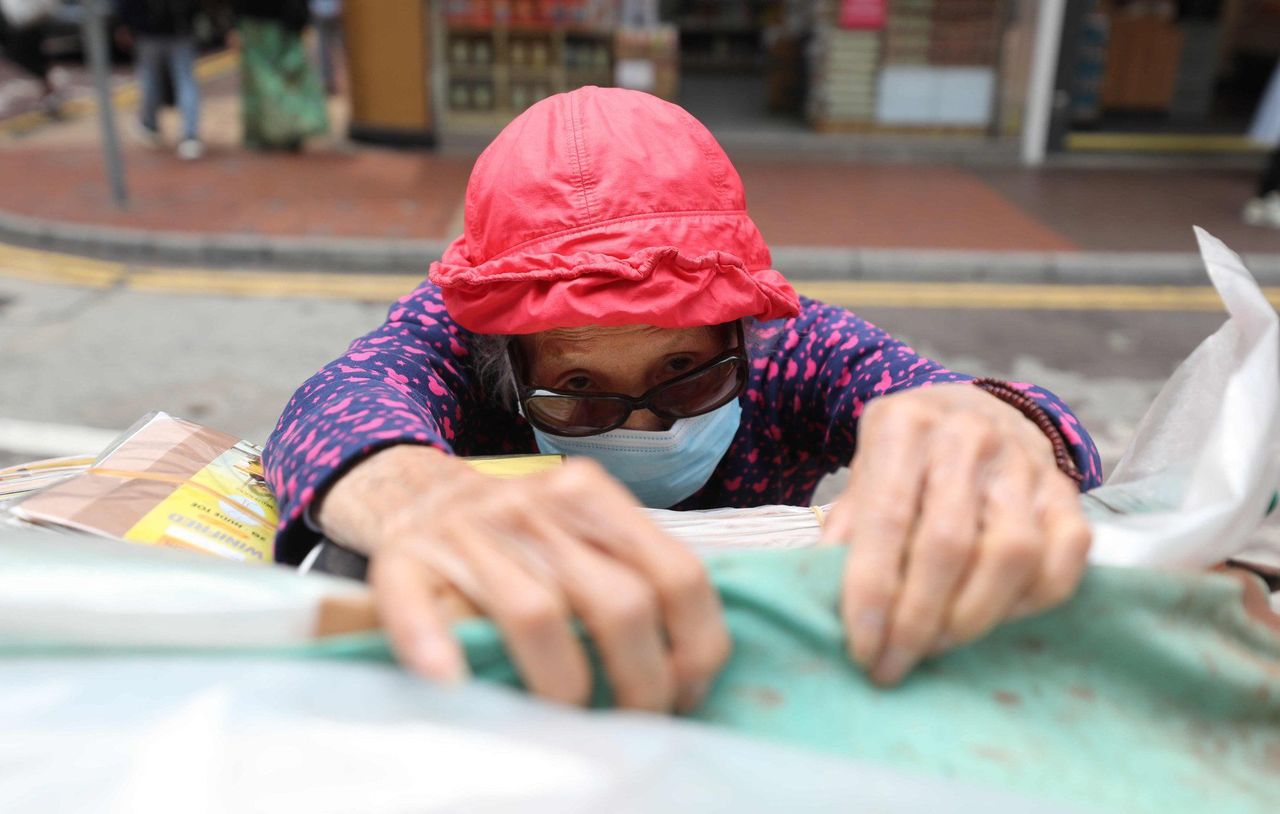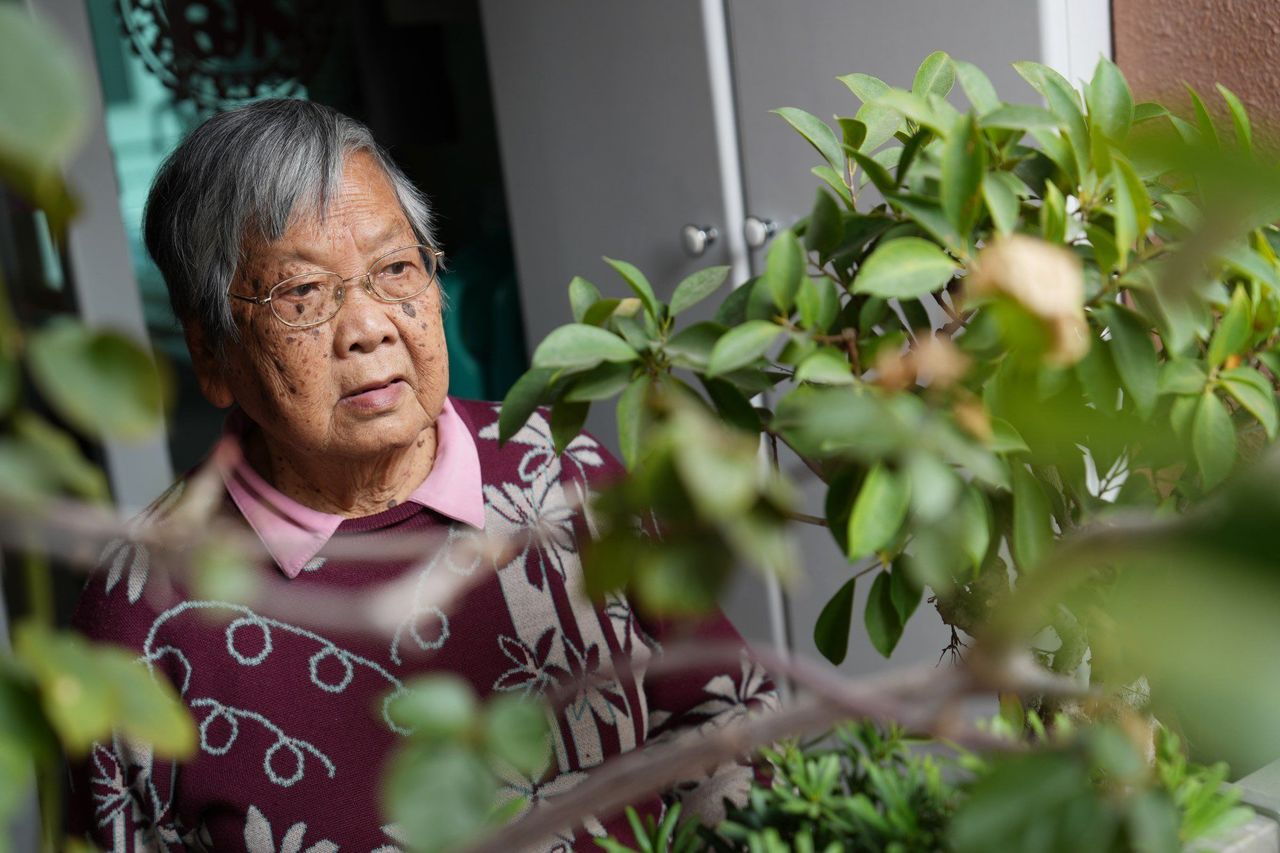Hong Kong News

Hong Kong’s street hawkers are dwindling, ageing and fading out of sight
Around noon every day, 81-year-old Au Yuk-hoo takes her time unpacking her cart, slowly arranging the socks and stockings she sells along bustling Lee Garden Road in Hong Kong’s Causeway Bay.
Before she was done setting up her stall on a Wednesday, a regular customer stopped to buy three pairs of ankle socks for HK$20 (US$2.50) each.
“I have been selling them for 60 years,” she said.
Au is one of Hong Kong’s last itinerant hawkers. Only about 300 licensed hawkers have mobile carts and, like Au, most are ageing.
Street hawkers were in the news recently, after law enforcement officers confiscated the cart of licensed roasted chestnut seller Chan Tak-ching, 90, in Cheung Sha Wan on March 6.
Food and Environmental Hygiene Department officers also took away a 29-year-old man, who a distraught Chan said was minding her cart while she was on a toilet break.
Hawker Au remembered days long ago when she too was chased away by enforcement officers clearing the crowded streets of vendors selling cheap goods and all sorts of food.
 Hawker Au Yuk-hoo says she earns about HK$10,000 a month from her cart.
Hawker Au Yuk-hoo says she earns about HK$10,000 a month from her cart.
She tried having a shop, but when her landlord doubled the rent, she returned to street hawking.
She recalled the days when the Causeway Bay area was popular with foreigners and mainland Chinese tourists who came to buy from her stall.
Married to a repairman, now 83 and retired, she said her job helped her provide for their two sons and three daughters.
Business slowed down over the years, she said, and almost all her remaining customers were people who had known her for years.
Earning about HK$10,000 a month now, Au said she had no plans to retire although she promised her children to work shorter hours.
“I can’t bear staying at home and doing nothing,” said the grandmother of four.
Lawmaker Doreen Kong Yuk-foon was concerned that strict government control measures could see the last street hawkers fade away. The Covid-19 pandemic had already forced many out of business, she said.
Of the city’s 5,504 licensed hawkers last year, 5,200 operated from designated, stationary stalls, and 304 had mobile carts.
Most of the hawkers were found in the Yau Tsim Mong and Sham Shui Po districts, where the popular Ladies’ Market and Temple Street Night Market have rows of stalls selling all sorts of souvenirs, clothing and electronic goods.
Kong said many of the city’s remaining hawkers were above 60, as the authorities had stopped issuing new hawker licences since the 1970s, except in special circumstances.
She said itinerant hawkers had to man the stalls themselves and were not allowed to engage assistants.
She predicted that the remaining itinerant hawkers would die out within 10 years if there were no policy changes to keep the trade going.
Calling for hawking to be retained, she said it was not only a way for some to earn a living, but also a part of Hongkongers’ cultural heritage and collective memory.
 Chan Tak-ching, a 90-year-old hawker, had her roasted chestnut cart
confiscated by Food and Environmental Hygiene Department officers
earlier this month.
Chan Tak-ching, a 90-year-old hawker, had her roasted chestnut cart
confiscated by Food and Environmental Hygiene Department officers
earlier this month.
Kong urged the government to change the rules to strike a balance between maintaining environmental hygiene and letting the hawkers survive.
She suggested allowing hawkers to hire assistants and relaxing restrictions on areas that were off-limits to hawking.
Urging the authorities to carry out studies and speak to hawkers to better support them, she said: “Hawking is not only a business, but a feature of the city.”











